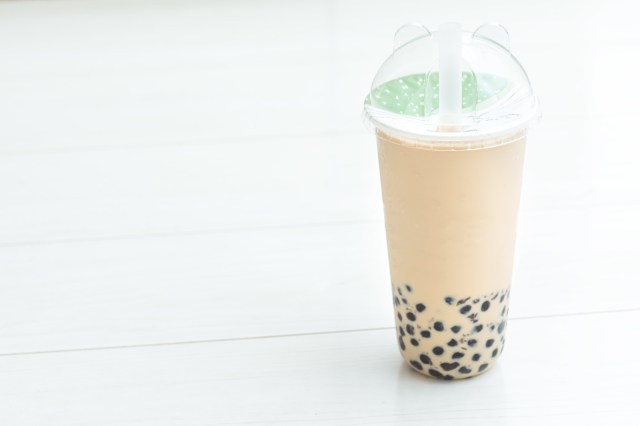
Will this be the nail in the coffin, the last boba straw through the lid?
Tapioca, also known as boba, bubble tea, or pearl milk tea depending on where you’re from, peaked during the summer of 2019 in Japan with a multitude of stores popping up and some establishments even selling one-liter (33.8-ounce) servings. While we predicted that tapioca was on its way out during the cold-drink-killing winter months, another force has stepped up to potentially squash the existence of boba in Tokyo: COVID-19.
▼ Tapioca, tapioca, don’t go away-oca.
Ever since a state of emergency was announced in Tokyo, at least ten tapioca speciality shops, including chain stores from franchises with widespread international reach such as Gong Cha and CoCo, have closed in Harajuku—an area that typically experiences high volumes of tourists and shoppers.
Surviving shops have managed by either being situated in a location with a steady amount of foot traffic, such as near a subway exit, or employing new ways to pay rent. Many stores have shifted their business strategies to include a new coffee and/or food menu, collaborating with local Japanese franchises as is the case for Taiwanese tea-giant Sharetea and conveyer belt sushi chain Sushiro, focusing on products with seasonal flavors, or even selling face masks.
Gong Cha in particular has worked to bolster their menu with new drinks, such as this vinegar-based fruit mixture. While vinegar-based drinks have been a health trend in Japan since the early 2000s, the new move aims to broaden Gong Cha’s selection of drinks to health-conscious Japanese folks.
▼ Drinking vinegars, not to be confused for vinegars used in cooking, typically have half the acidity and are usually combined with fruit for a refreshing treat. Gong Cha’s have panama oranges and pineapple as the base.
One store in particular, Chun Sui Tong, based in Taichung and a shop that claims to be the first to invent tapioca, has pressed on with a slant of introducing Taiwanese as well as Chinese cuisine with a slight twist. Recent inclusions so far have involved a more northern Chinese variety, such as a soup version of dan dan noodles, or a type of spicy noodle traditionally served dry, and hot and sour soup with ramen noodles.
▼ Though not necessarily the most authentic Taiwanese cuisine, hot and sour soup with chicken and ginger as well as the black sesame dan dan noodles are on the menu for the uninitiated.
Regardless of these efforts by different establishments to weather through the pandemic, social media users gave a mixture of sentiments, with some individuals pleased by tapioca’s seemingly close death and others approaching the situation with a heavy heart:
“Even without corona we already passed the boom sometime ago.”
“They really were making an easy killing though by selling something worth 30 yen (US$0.29) at around 400-500 yen ($3.82-4.77).”
“It can’t be helped that the stores which only started off strong due to the boom are now closed, but it’s kinda sad that the high quality ones are suffering as well. Seems like there’s no cushion for them anymore.”
“I like tapioca and have been drinking it for the past twenty years, but thanks to the ‘boom’ I had to really hold off because of rising prices. Tapioca pearls aren’t expensive to buy and people have only been focused on making a profit by raising the prices. I’m at peace if the owners of the closed-down stores intended to just make some quick cash without planning for the long term.”
“My issue with the boom is that it drove people to buy tapioca because it was a trend or because it was Instagrammable. I wish from hereon people can buy tapioca because they find it tasty.”
▼ But for real, it’s pretty easy to make tapioca at home. All you need is some tapioca pearls, condensed milk, and black tea leaves, then you’re set!
Maybe I’m more on the optimistic side, but I don’t necessarily think the closures will spark the end of tapioca in Japan. Tapioca has been around for over 30 years since its creation in the late 1980s, and while a pandemic may weed out the weaker businesses, I doubt it can crush an entire industry in the age of convenient delivery services. Compared to traditional sit-down restaurants, tapioca also has the advantage of take out, even in the form of pizza for the culinarily curious.
Source: Yahoo! News via Jin
Top image: Pakutaso
Insert image: Pakutaso (1, 2)
● Want to hear about SoraNews24’s latest articles as soon as they’re published? Follow us on Facebook and Twitter!